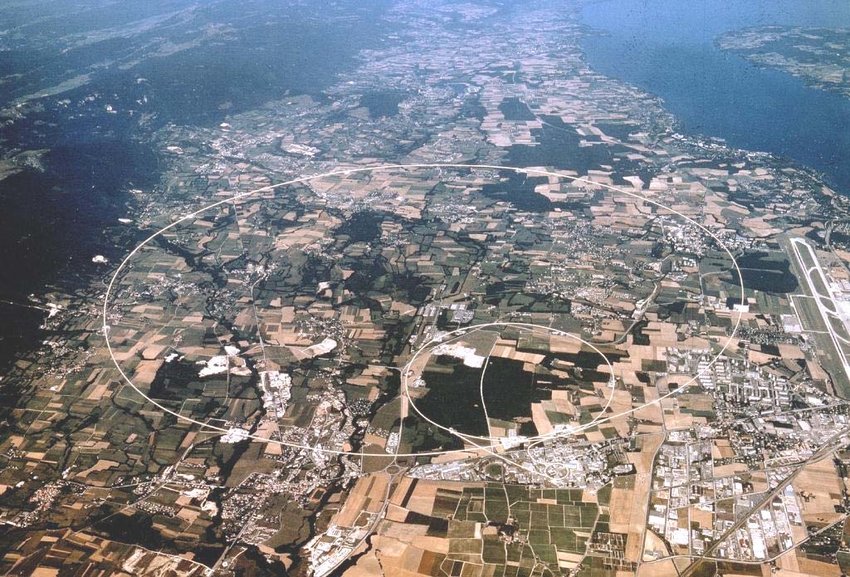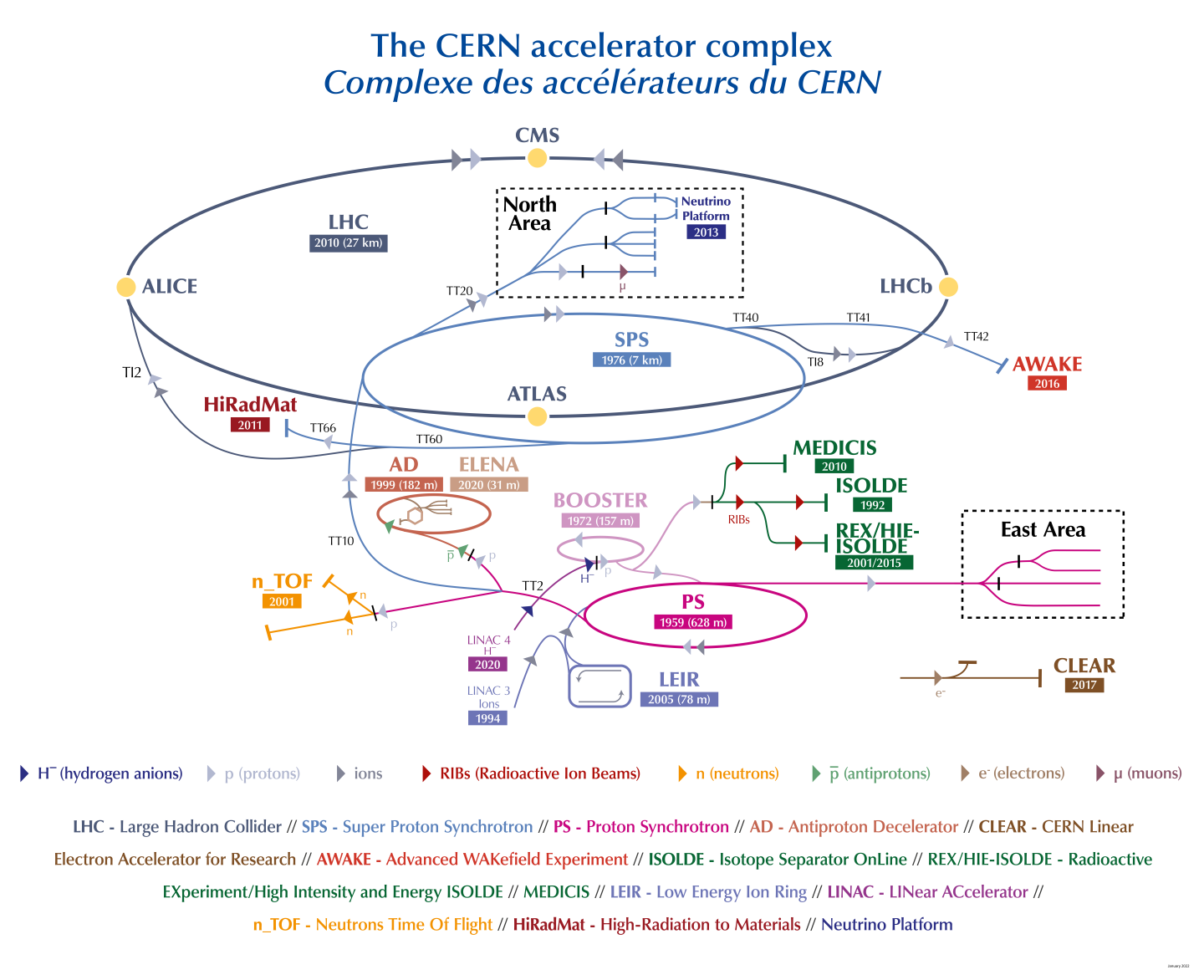Here I will collect various topics in high energy physics.
An interesting magazine: CERN Courier.
Here is an aerial view of the
CERN accelerator complex and an explanatory figure (clickable here and here ):


This accelerator complex first and foremost illustrates the rich and diverse scientific program of CERN. Middelbare scholieren, dit is een rijke bron van inspiratie voor profielwerkstukken
Linac4 (160 MeV); the two electrons are stripped off the negative hydrogen ions prior to entering the
'booster', a small circular accelerator (2 GeV).
In addition to injecting protons into the PS, the booster delivers beam to ISOLDE for producing numerous radioisotopes for a dedicated nuclear physics programme. In parallel a beamline for producing isotopes for medical applications (diagnosis and therapy) is in operation: MEDICIS.
The PS proton beam delivers secondary beams and testbeams to fixed target stations in the East Hall. Furthermore it feeds a neutron source (n-TOF) for precision measurements of cross sections of neutron induced nuclear reactions. The PS also feeds an anti-proton facility AD and Elena for studies of anti-atoms. Finally the PS is an injector for the super proton synchrotron SPS(450 GeV).
The SPS delivers protons for secondary beams in the Nort Hall. It also delivers the beam for a special project studying a novel way of particle acceleration, plasma wake field acceleration, AWAKE. The SPS also delivers the beam for a dedicated high intensity irradiation facility HiRadMat. And finally and very importantly it serves as an injector for the LHC, the large hadron collider: colliding proton beams of 6.8 TeV each for the run starting in 2022 (Somewhat lower energies for the earlier runs). The LHC can also store heavy ions (in particular Pb82+), accelerated through the chain: Linac3, LEIR, PS, SPS, LHC.
The LHC physics programme is by far the most important part of CERN's activities. Its greatest achievement so far is the discovery of the Higgs-boson (2012). Measuring its properties (e.g. branching ratios, including 'difficult' channels like mu-mu and c-cbar; Higgs self-couplings) is the task ahead, requiring high statistics and high quality data (LHC luminosiy upgrade, detector upgrades). This will not be completed before 2030 (2035). At the same time CERN needs to plan its future (projects) - that is quite a challenge! See e.g. this article . Also for LC news
The 600-MeV Synchrocyclotron (SC) came into operation in 1957. It was CERN’s first accelerator. It provided beams for CERN’s first experiments in particle and nuclear physics.
In 1990 the SC closed down after 33 years of service.
The large electron-positron collider LEP was in operation from 1989 untill 2000.